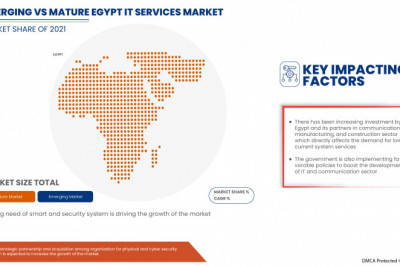views
Cyber attacks have become an unfortunate reality for businesses of all sizes. When headlines announce another data breach or ransomware incident, the immediate focus often centers on the damage done—stolen data, financial losses, and disrupted operations. But what happens after the cameras stop rolling and the initial panic subsides?
The journey from breach to recovery offers valuable insights that every organization can learn from. By examining cyber attack reports and analyzing how companies respond to security incidents, we can better understand both the challenges and opportunities that emerge from these digital crises.
The road to recovery is rarely straightforward, and the lessons learned often prove more valuable than the initial breach was costly.
The Immediate Aftermath of a Cyber Attack
When a cyber attack strikes, the first 24 to 48 hours are critical. Cyber attack news reports frequently highlight the chaos that unfolds during this period. Organizations must simultaneously contain the threat, assess the damage, and communicate with stakeholders.
Most companies discover attacks through external sources rather than their own monitoring systems. This reality underscores a significant gap in threat detection capabilities that many organizations face. The initial response typically involves isolating affected systems, engaging incident response teams, and beginning forensic investigations.
Communication becomes paramount during these early hours. Companies must balance transparency with the need to avoid causing additional panic among customers, employees, and partners. The most successful recovery efforts begin with honest, timely communication that acknowledges the incident without providing details that could compromise ongoing security efforts.
Understanding the Full Scope of Impact
Recovery begins with understanding exactly what happened. Comprehensive cyber attack reports reveal that the impact of security incidents extends far beyond the obvious technical damage. While data theft and system downtime grab headlines, the ripple effects often prove more significant and long-lasting.
Financial impacts include immediate response costs, regulatory fines, legal expenses, and lost business revenue. However, the hidden costs—such as decreased employee productivity, increased insurance premiums, and the resources required for enhanced security measures—often exceed the direct expenses.
Operational disruption varies significantly depending on the attack type and organizational preparedness. Companies with robust backup systems and incident response plans typically experience shorter recovery times and less severe operational impact.
Building Stronger Defenses Post-Breach
The most valuable aspect of any security incident lies in the lessons learned and improvements implemented afterward. Daily hacking news demonstrates that organizations often emerge from attacks with significantly enhanced security postures.
Post-breach security improvements typically focus on three key areas: prevention, detection, and response capabilities. Prevention measures include updated security policies, enhanced employee training programs, and improved access controls. Detection improvements often involve investing in advanced monitoring tools and establishing dedicated security operations centers.
Response capabilities receive particular attention after an incident. Organizations refine their incident response plans, establish clearer communication protocols, and create more efficient coordination mechanisms between internal teams and external partners.
The Human Element in Recovery
Technology systems can be restored relatively quickly, but rebuilding human confidence takes considerably longer. Employees, customers, and partners all require different approaches to regain their trust and confidence in the organization's security capabilities.
Employee training programs become more comprehensive and frequent following security incidents. Staff members who lived through a cyber attack often become more security-conscious and better equipped to identify potential threats. This increased awareness can transform an organization's overall security culture.
Customer communication strategies must address concerns about data protection while demonstrating the concrete steps taken to prevent future incidents. Transparency about improvements, without revealing specific security details, helps rebuild customer confidence.
Regulatory and Compliance Considerations
Cyber attack reports consistently highlight the complex regulatory landscape that organizations must navigate during recovery. Different industries face varying compliance requirements, and the specific nature of compromised data determines which regulations apply.
Notification requirements can be particularly challenging, as organizations must balance speed with accuracy. Premature notifications may contain incomplete or incorrect information, while delayed notifications can result in regulatory penalties.
Documentation becomes crucial during the recovery process. Regulatory authorities expect detailed records of the incident timeline, response actions taken, and remediation efforts implemented. This documentation often proves valuable for improving future incident response capabilities.
Long-Term Strategic Changes
Successful recovery extends beyond restoring normal operations. The most resilient organizations use security incidents as catalysts for broader strategic improvements.
Budget allocations for cybersecurity typically increase significantly following an attack. Organizations often discover that their previous security investments were insufficient and adjust their spending priorities accordingly.
Vendor relationships frequently change after security incidents. Companies may switch to providers with stronger security credentials or implement more stringent security requirements for third-party partners.
Turning Crisis into Opportunity
While no organization wants to experience a cyberattack, those that handle recovery effectively often discover unexpected benefits. Enhanced security measures, improved employee awareness, and stronger incident response capabilities can position companies better than they were before the attack.
Some organizations find that their transparent handling of security incidents actually strengthens customer relationships. Demonstrating accountability and concrete improvement efforts can build greater trust than existed previously.
The key lies in viewing recovery not as a return to the previous state, but as an opportunity to build something stronger and more resilient.
Building Resilience for the Future
The journey from breach to recovery never truly ends. As cyber threats continue to evolve, organizations must maintain their vigilance and continuously improve their security postures. The insights gained from each incident contribute to a broader understanding of cyber risk management.
Regular review of incident response plans, ongoing employee training, and continuous monitoring of the threat landscape help organizations stay prepared for future challenges. The goal isn't to prevent all possible attacks, but to build the resilience needed to respond effectively when incidents occur.
Organizations that embrace this mindset transform from reactive victims into proactive defenders, better equipped to protect themselves and their stakeholders in an increasingly complex digital environment.











